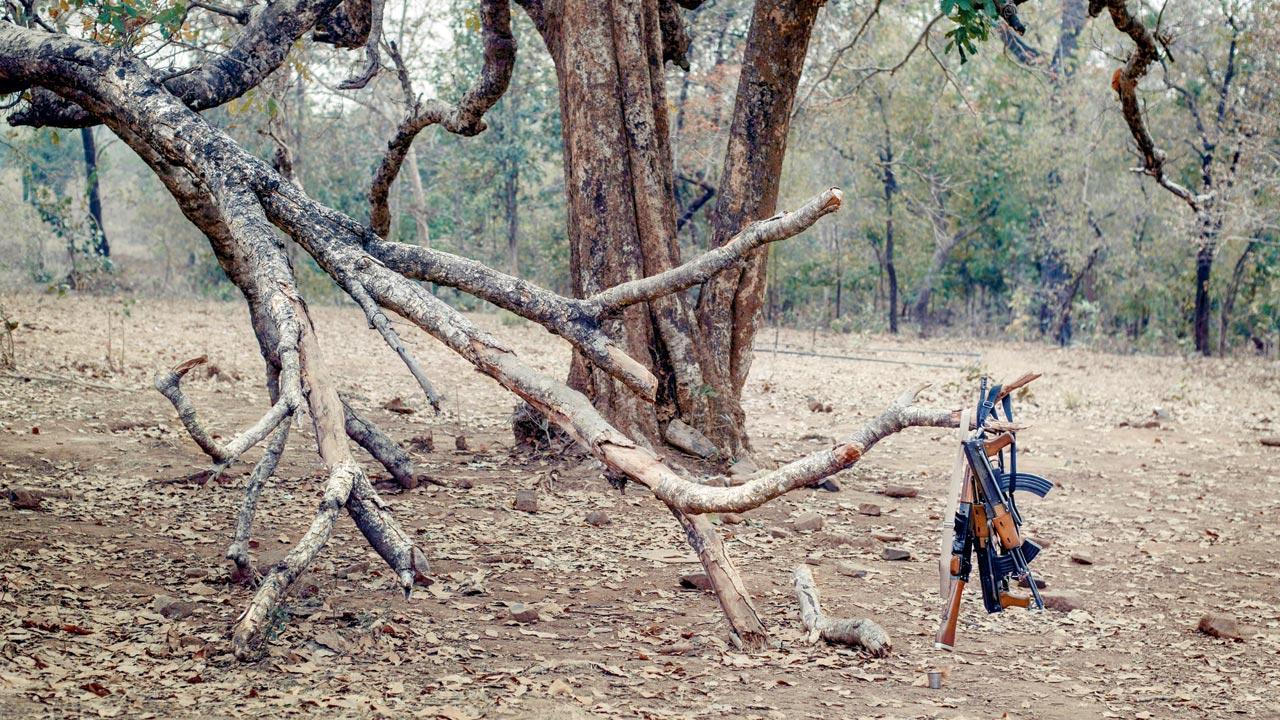A photographer spent eight years in the forests of Chattisgarh and Jharkhand, interacting with the many female faces behind the rebellion. Her work is now in the running for a coveted photography award

Basu’s pictures explore the Maoist movement, but through the lens of environmental justice and feminism
Naxalbari, located in the West Bengal district of Darjeeling, lit a fire that spread across large parts of India and continues to burn today in the form of the Maoist movement. Exacerbated by the landlords’ exploitation, peasants across the village banded together. In the two years preceding 1967, cadres of the Communist Party of India (Marxist) sowed the seeds of rebellion in Naxalbari. The CPI-M, a splinter group of the Communist Party of India (CPI), was convinced that a true socialist revolution could only be achieved if workers and peasants launched an armed uprising against the moneyed classes.
ADVERTISEMENT
Several decades on, Poulomi Basu, transmedia artist, photographer, and actress, travelled into the hinterlands of Chhattisgarh and parts of Odisha and Jharkhand, the epicentre of the insurgency, spending eight years there. Her recently published book, Centralia, a work of docu-fiction, explores the conflict, but through the lens of environmental justice and feminism. She’s one of the four photographers to be shortlisted for the Deutsche Börse Photography Prize 2021, for her work on Centralia.
Basu, who is the first South Asian to be nominated for this award in its 25-year history, says that Centralia was as much a personal, as it was a social endeavour. “I was born and raised in Kolkata’s College Street, which at one point was the epicentre of the Naxalite movement,” she says.
A box that she later discovered, comprising her late father’s photographs and documents detailing his arrest for sympathising with the Naxalite left-wing guerillas, led her to investigate further. “My parents had witnessed violence unfold in front of their eyes. They knew many people who had been part of the movement; some died, others were imprisoned. Nobody spoke about it. It was essentially something buried in history,” she remembers.
While it was a political and ideological movement in Bengal, in Chhattisgarh, it became a militarised movement. “It differed in different parts of India, and seeing what role women played when pushed to the brink of extremes, as well as how they challenged their own roles in society, drew me to it,” she adds.
She describes her journey of working on Centralia as one of understanding her own country, democracy, and putting it in a global context, as well as understanding what this means for the future of the planet. The book is an amalgamation of varied voices—that of Adivasi tribal activists, Maoists, many of whom were female guerrillas.
“The women I met there were brave. There were more stories to comprehend, as well as more people to represent, particularly their work and minds. The bond I formed with the people there over a long period of time was priceless. I met amazing activists like Bela Bhatia, as well as a fascinating group of lawyers from the Jagdalpur Legal Aid Group. It was inspiring to see so many women working in so many difficult places and being able to commit themselves to that kind of environment.”
Poulomi Basu
“They were fierce and tough. Though language was a barrier, as most of them spoke Gondi, I needed their voices in the book, translated by them, in their own language, idiom, and style of writing. I also included some of the journalists’ perspectives,” she says, adding, “I didn’t want to write a book about myself and my journey because it didn’t feel right. It was critical for me to highlight all of these different elements in the book as well. Some of the material I have isn’t even perfect, but it’s beautiful because it has its own idiom and lyrical rhythm that is entirely theirs,” Basu explains.
Her work also addresses the “deeply underreported issues, such as environmental justice, and how it plays out not only in India, but also globally, where people have historically paid a price for progress”. “All of these genocides are linked to ecocides,” she says.
Her work, which consists of photographic and archival material, and a sci-fi short film, is currently on display at the Photographers Gallery in London. It has recently been permanently acquired by the Victoria and Albert Museum in London, where it is going to be displayed in the museum’s contemporary art section.
Basu admits that it was gruelling to work in these conflict zones. “The biggest challenge was living and working as a woman for an extended period of time. It was a very misogynistic environment in general. I’ve had a lot of male photographers try to talk me out of working there because they didn’t want another woman there.” Communicating with the scheduled tribes was another obstacle. “Since there was a language barrier, I was already perceived as an outsider, and with threat and speculation, which is perfectly normal in my opinion. But, this also worked to my advantage, because I got some good, raw and candid pictures. They were also perplexed by my presence, especially when they saw me, a young women, carrying big
film cameras.”
 Subscribe today by clicking the link and stay updated with the latest news!" Click here!
Subscribe today by clicking the link and stay updated with the latest news!" Click here!






